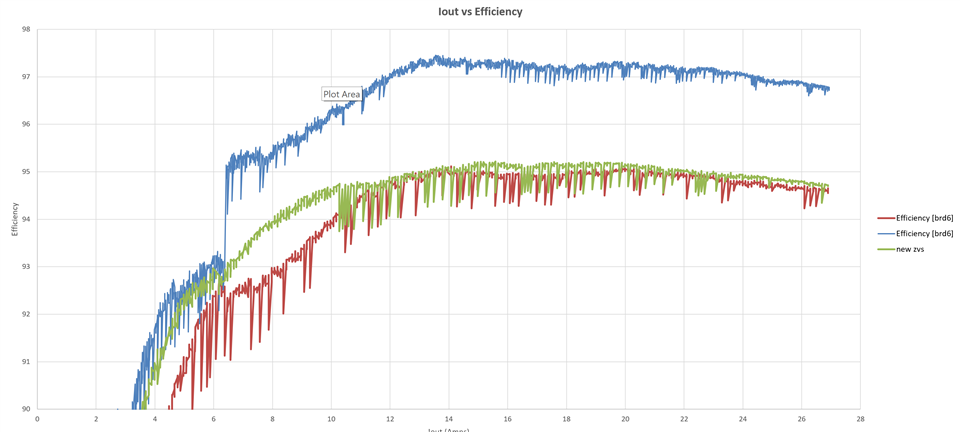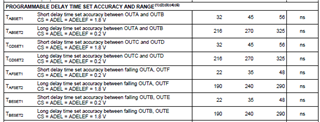Other Parts Discussed in Thread: UCC27714EVM-551,
Hello,
We modified the UCC27714EVM-551 for 24V output by changing transformer turns ratio and other key components voltage ratings. The original deadtime delay settings on the eval board seem to work well, so we left them as is. Once we got the board all working properly with our changes, we were recording a jump in efficiency from 95% to about 97% when the SR MOSFETs turn on around 6.5A output current...which was consistent over one week of testing (see blue curve in attached plot).... Original 26uH ZVS inductor on the board is used, which was getting up to 120deg.C with a desktop fan blowing on the board at medium speed.
We saw the primary clamp diodes were heating up to 70deg.C, so we changed to 5A fast recovery diodes (Vishay VS-5ECU06-M3) and saw they were heating up more...so, we stopped the measurement and replaced them with the original diodes (OnSemi MURS360T3G). Now when we tested efficiency (red curve), the efficiency was worse all across and the jump in efficiency upon SR MOSFETs turning on disappeared.
We then changed the ZVS inductor to a 50uH value and saw the efficiency improve a bit (green), but much worse than the blue curve. We are scratching our heads and haven't been able to figure out what happened.
We did try to measure the voltage drop across the SR MOSFETs...but the measurement was noisy and was transitioning from a positive voltage drop to a negative voltage drop during the time the MOSFETs were supposed to be ON. Attached Word file shows measurement of Vds (Ch4, 465mV/div) at Iout = 4A (SR's are OFF) and at Iout=7A (SR's are ON). Ch1 (yellow) is the corresponding gate drive signal, Ch1 is at 5V/div. Horizontal scale at 2.5us/div.
Any tips to figure out the cause of loss in improvement in efficiency when SR's turn ON would be really helpful.
Regards,
Nitish



